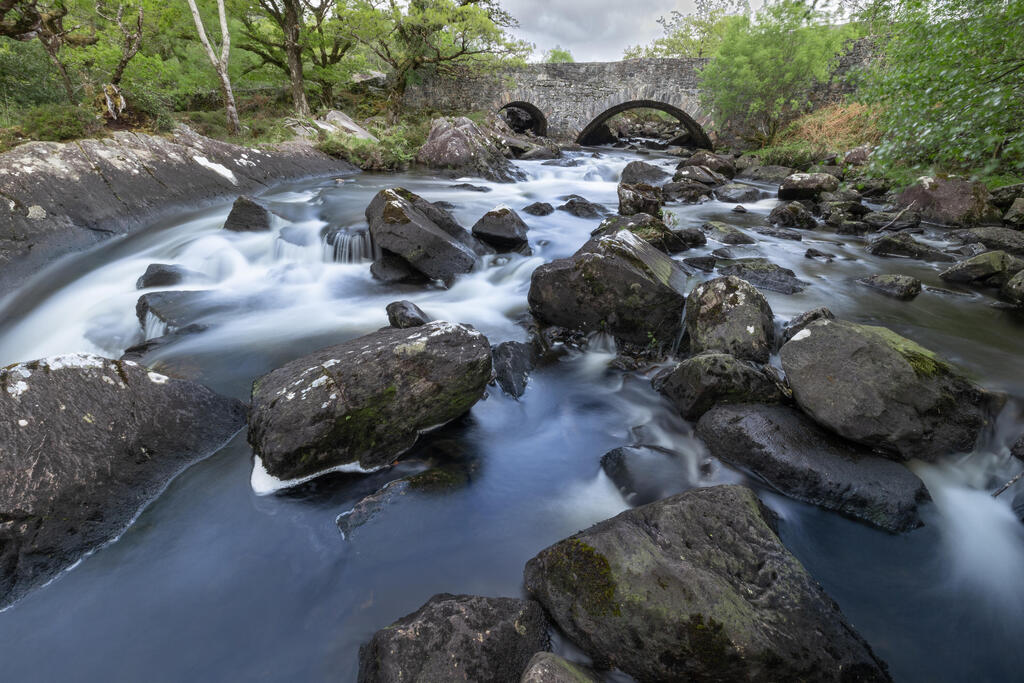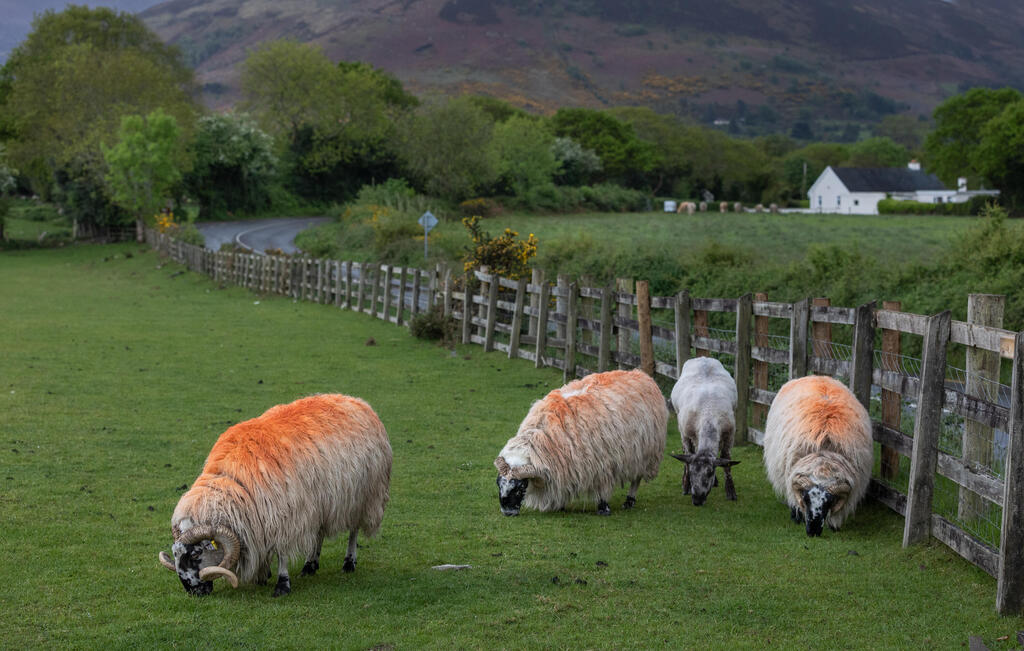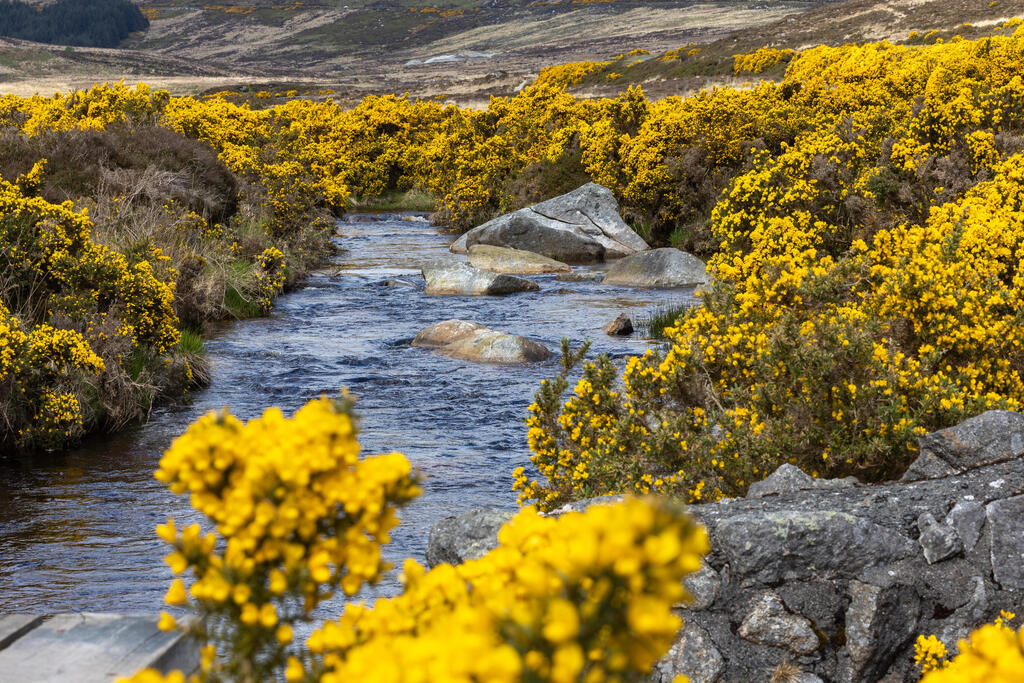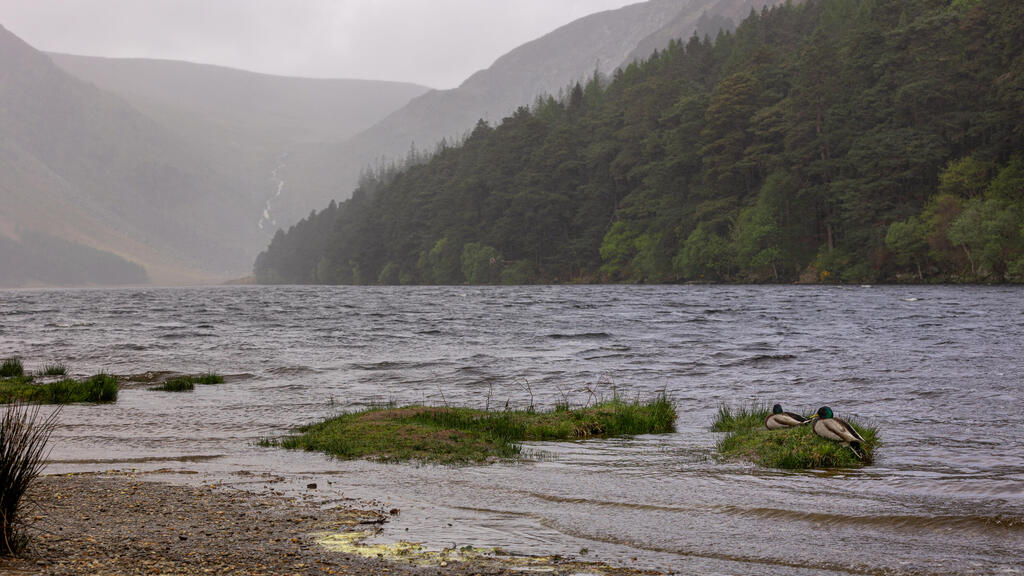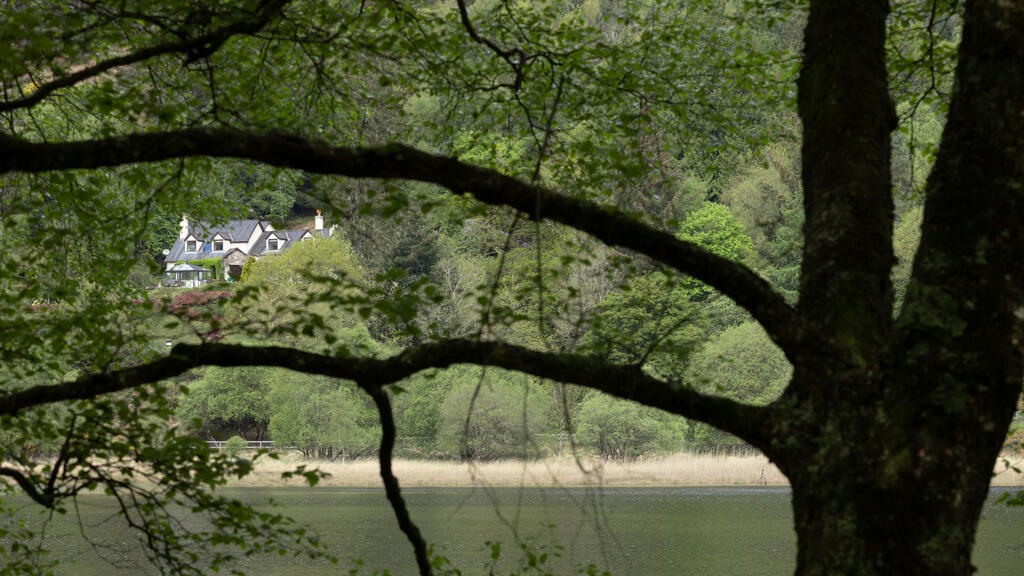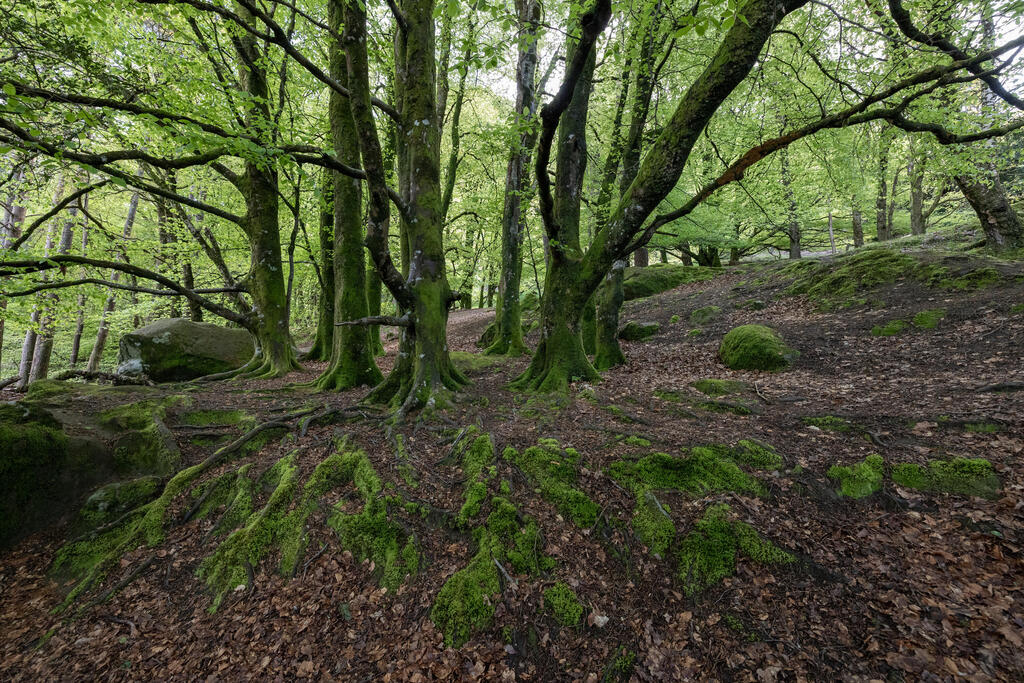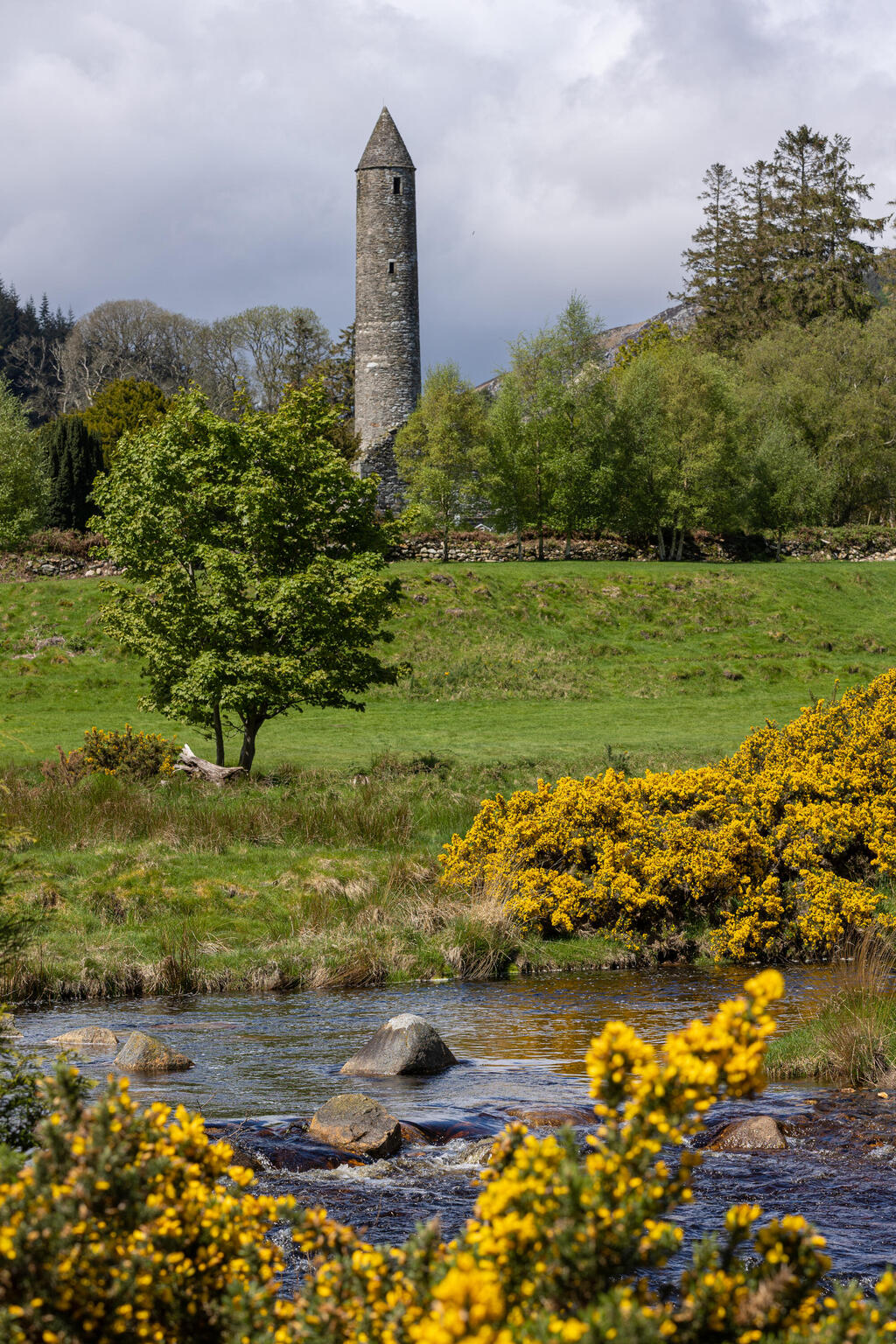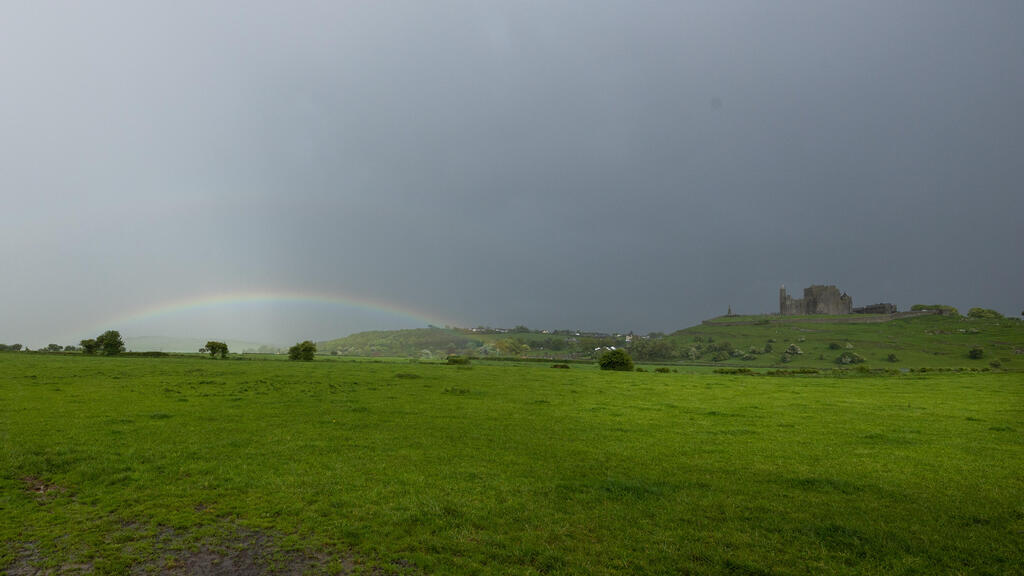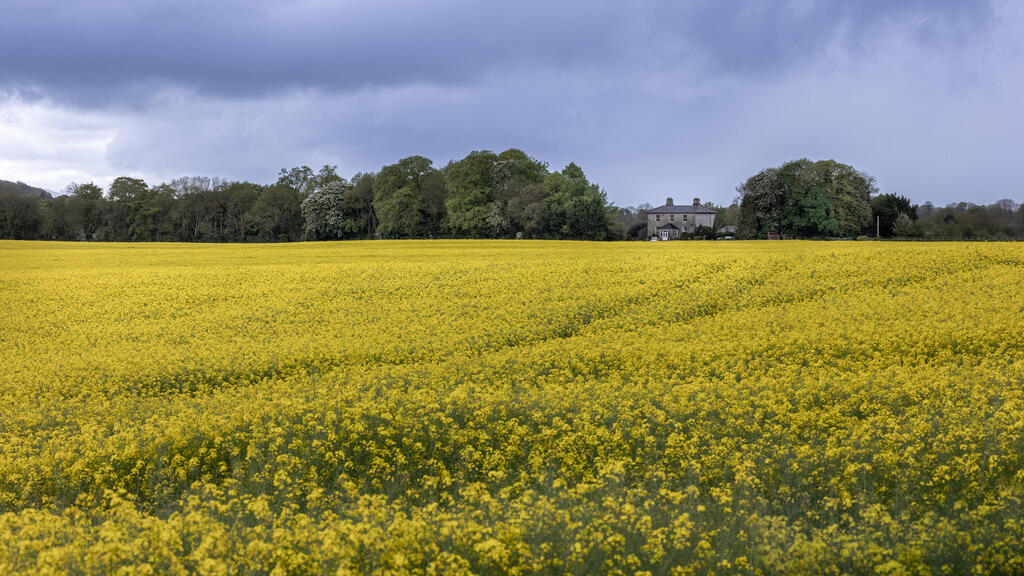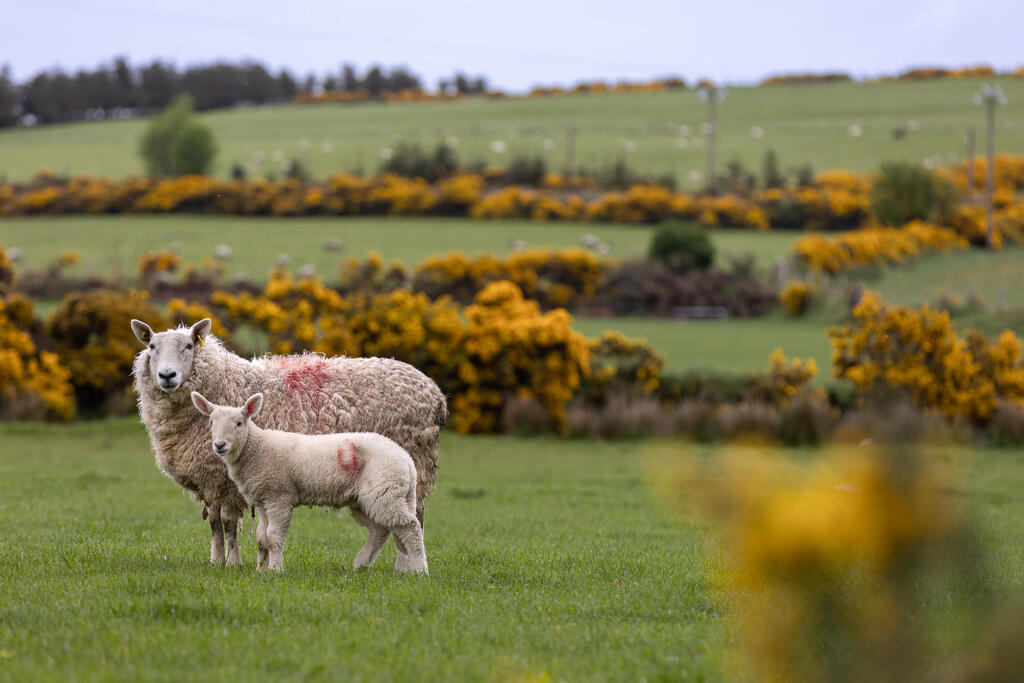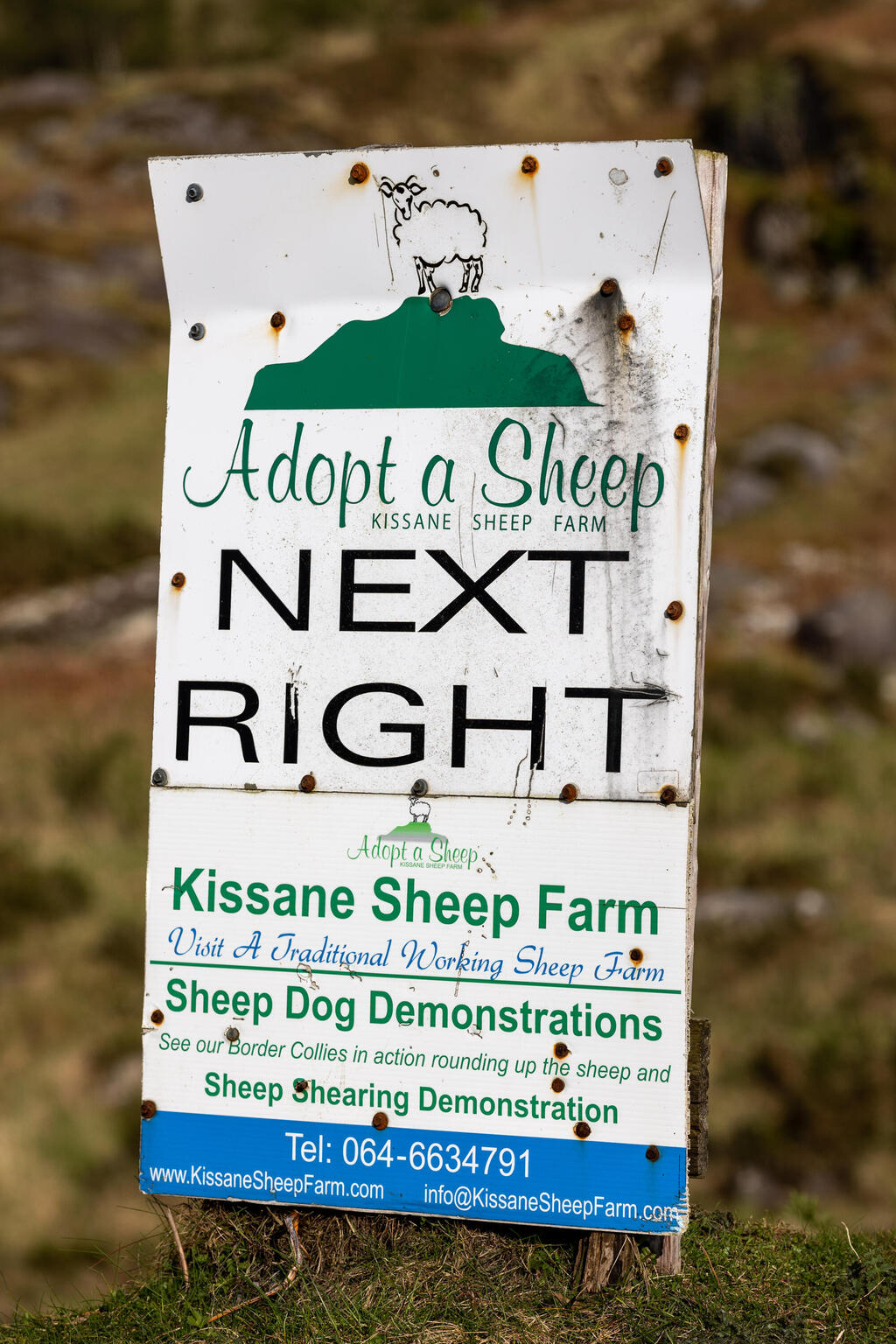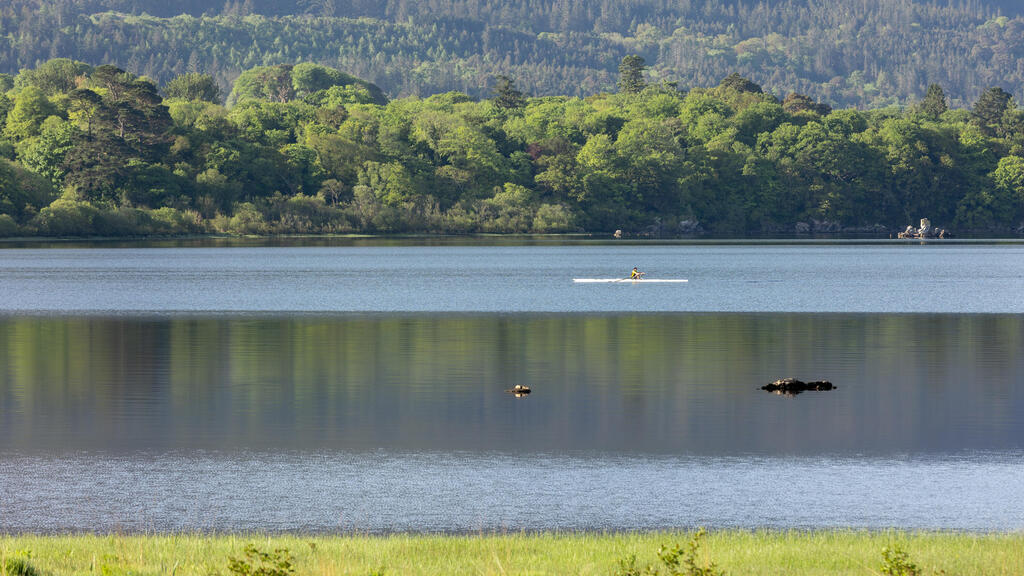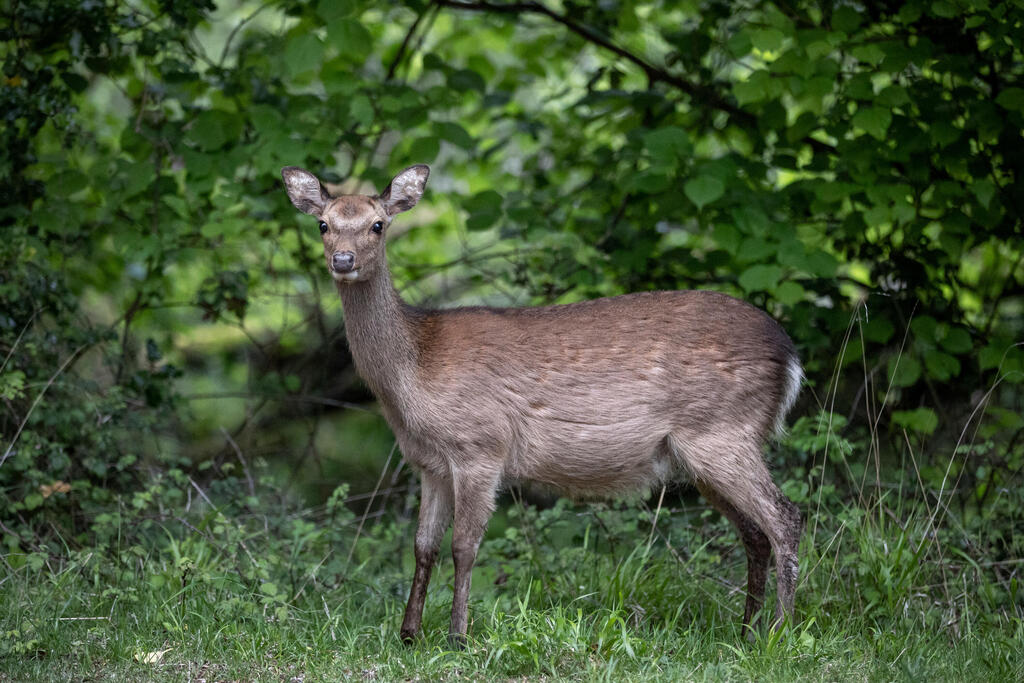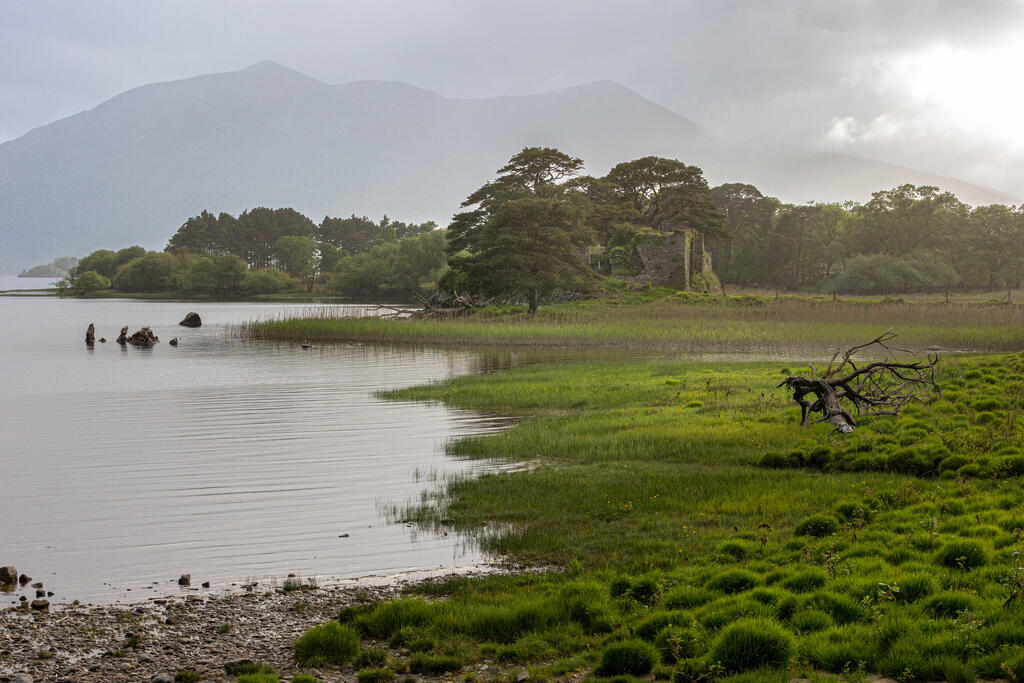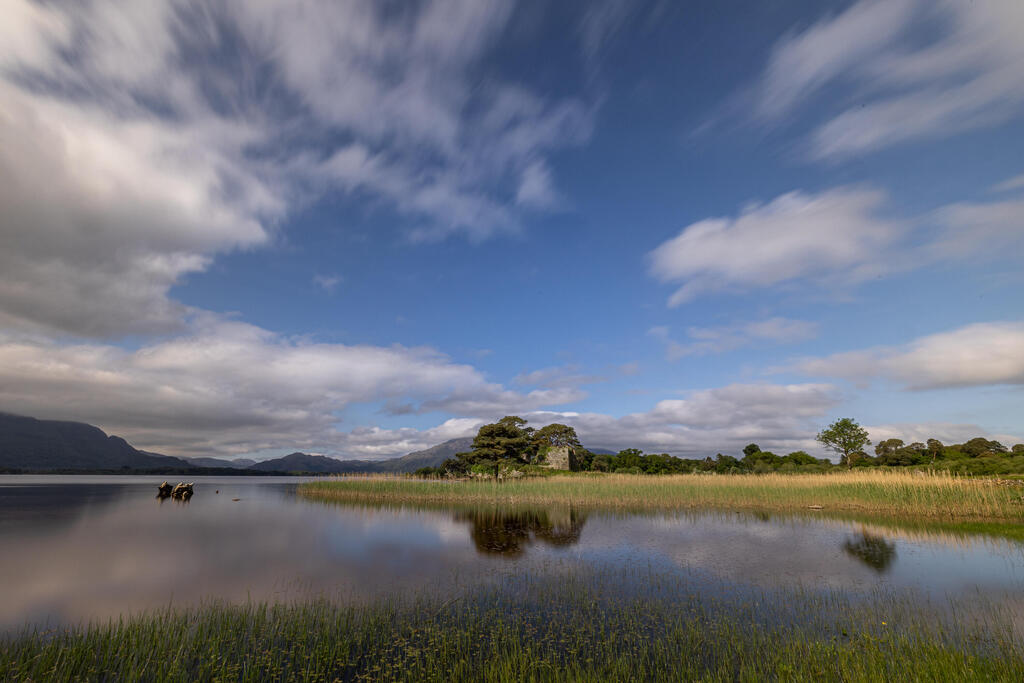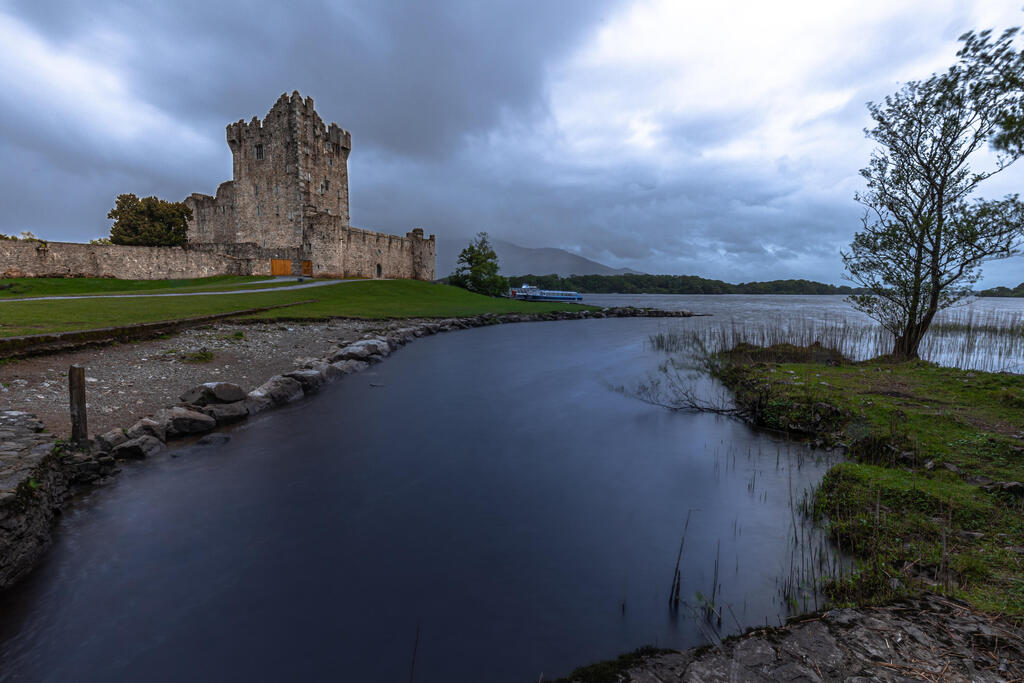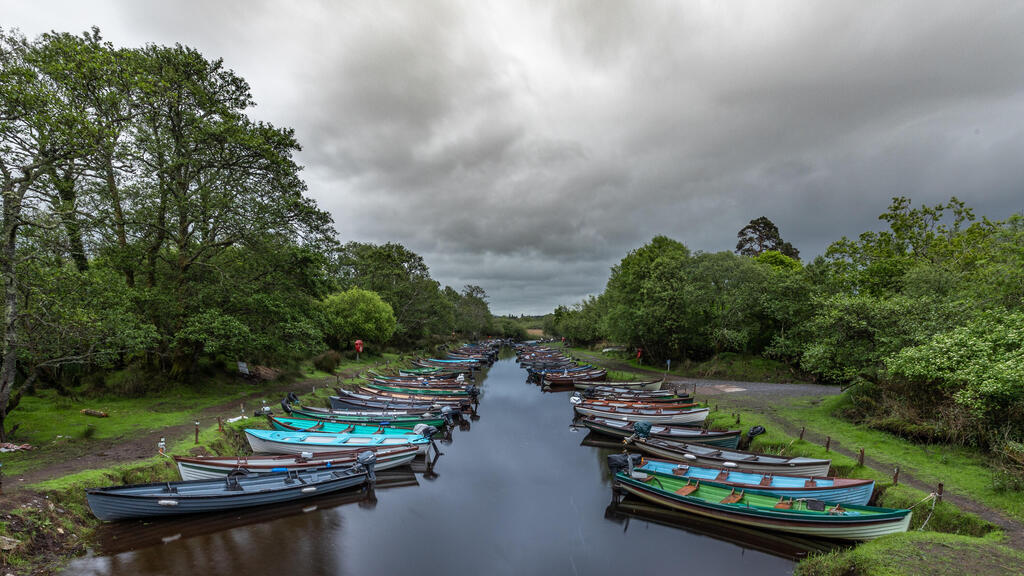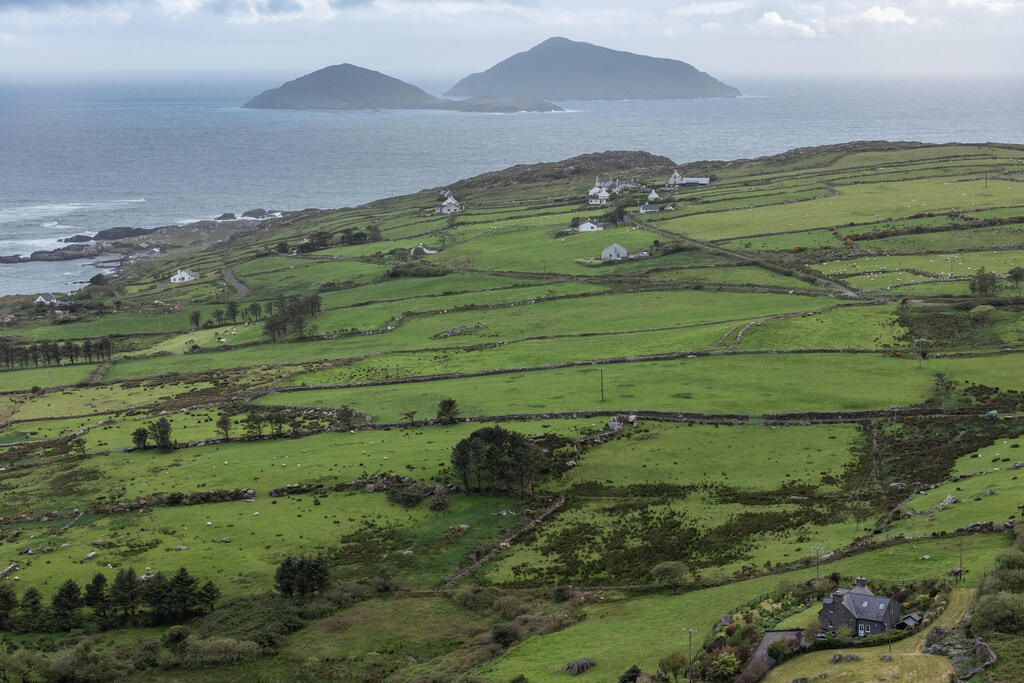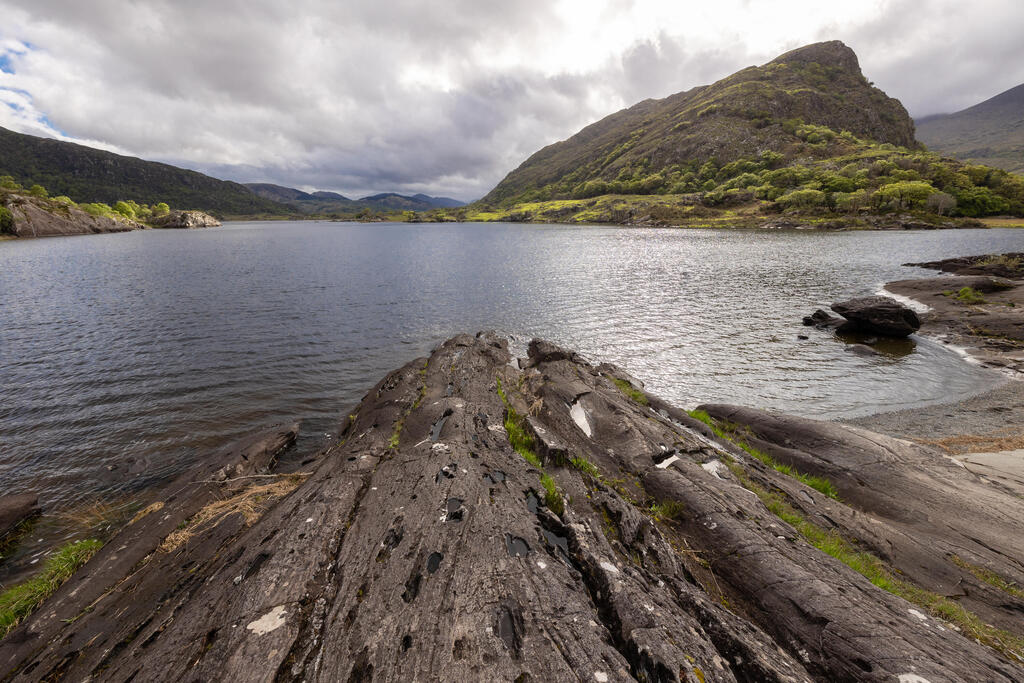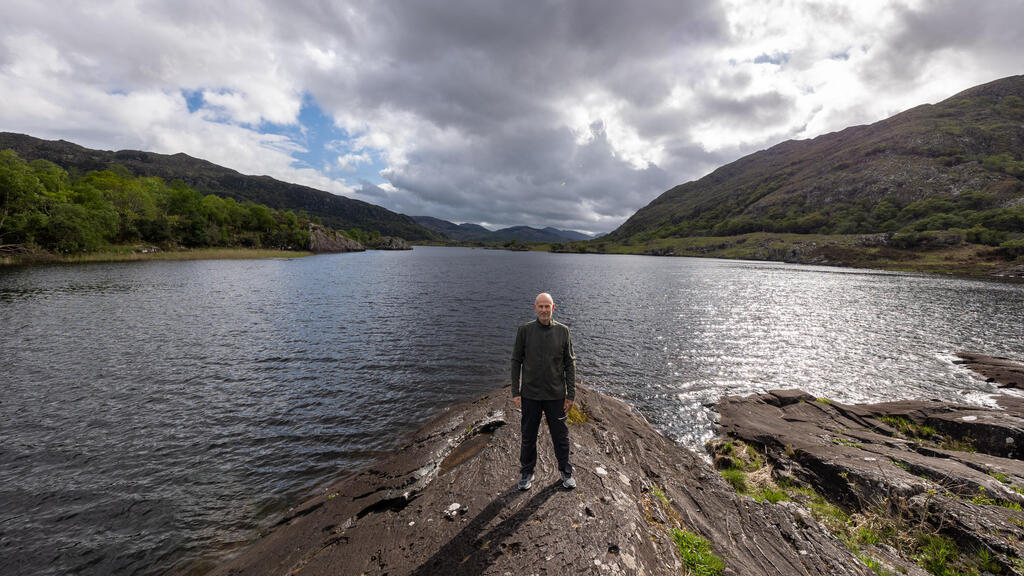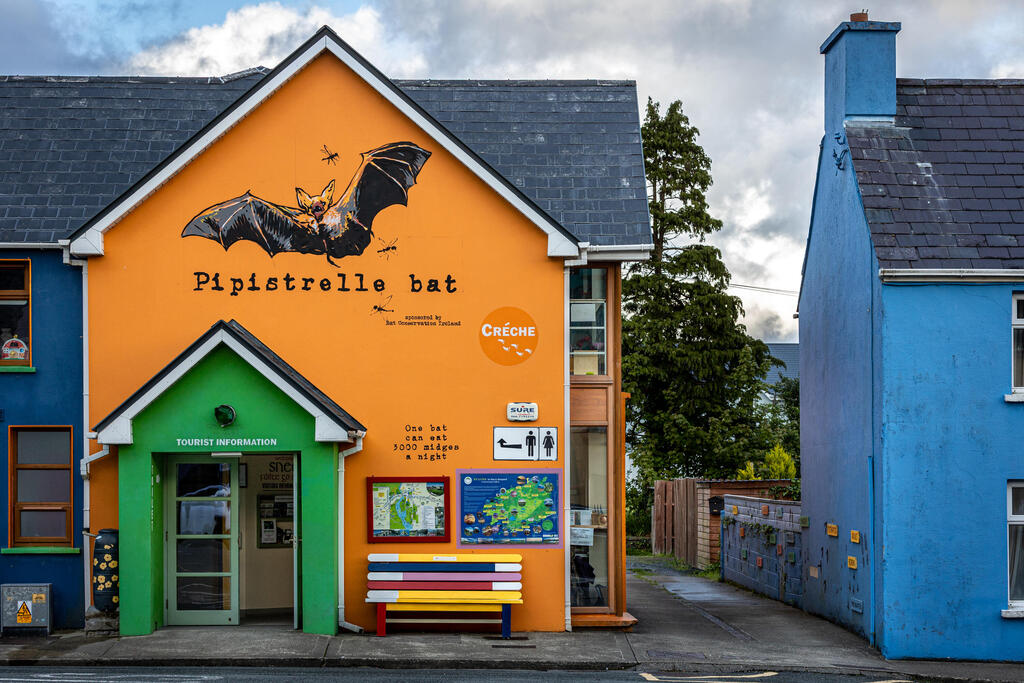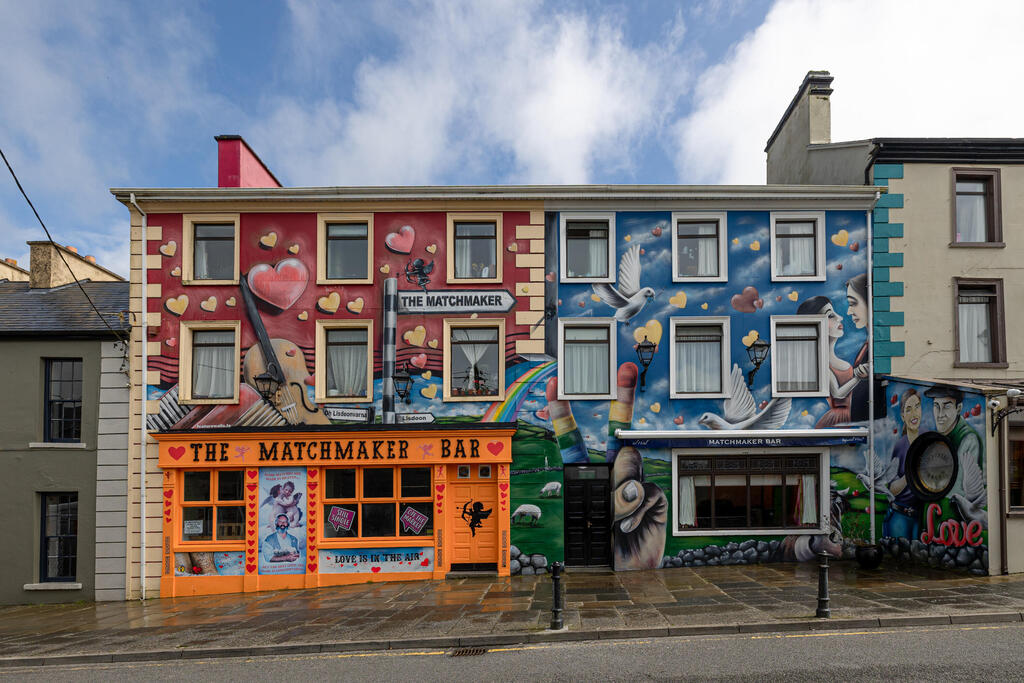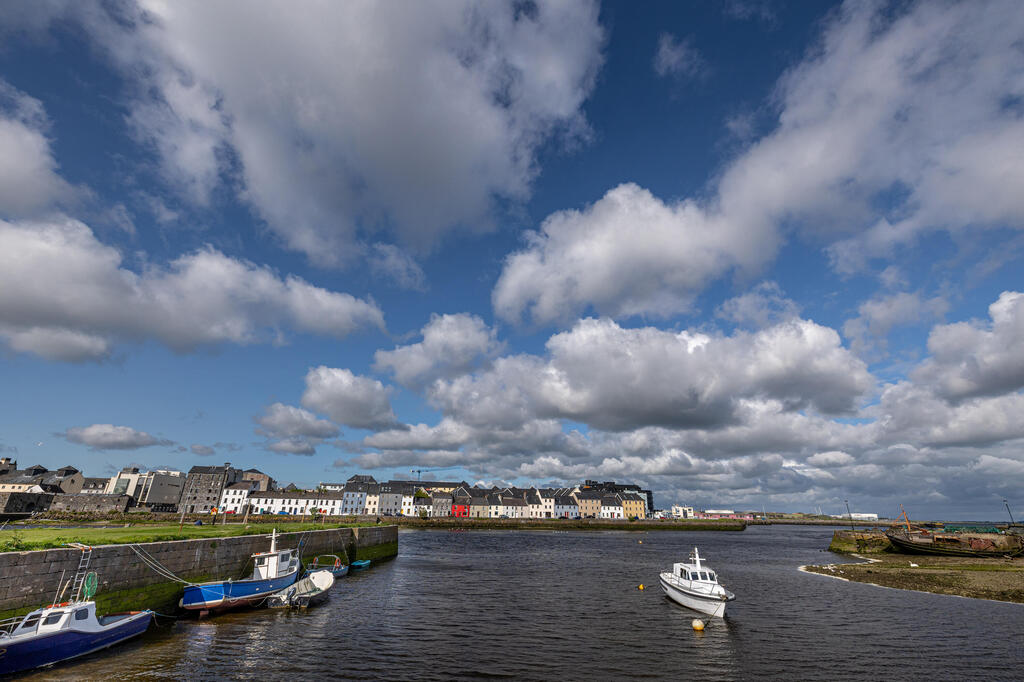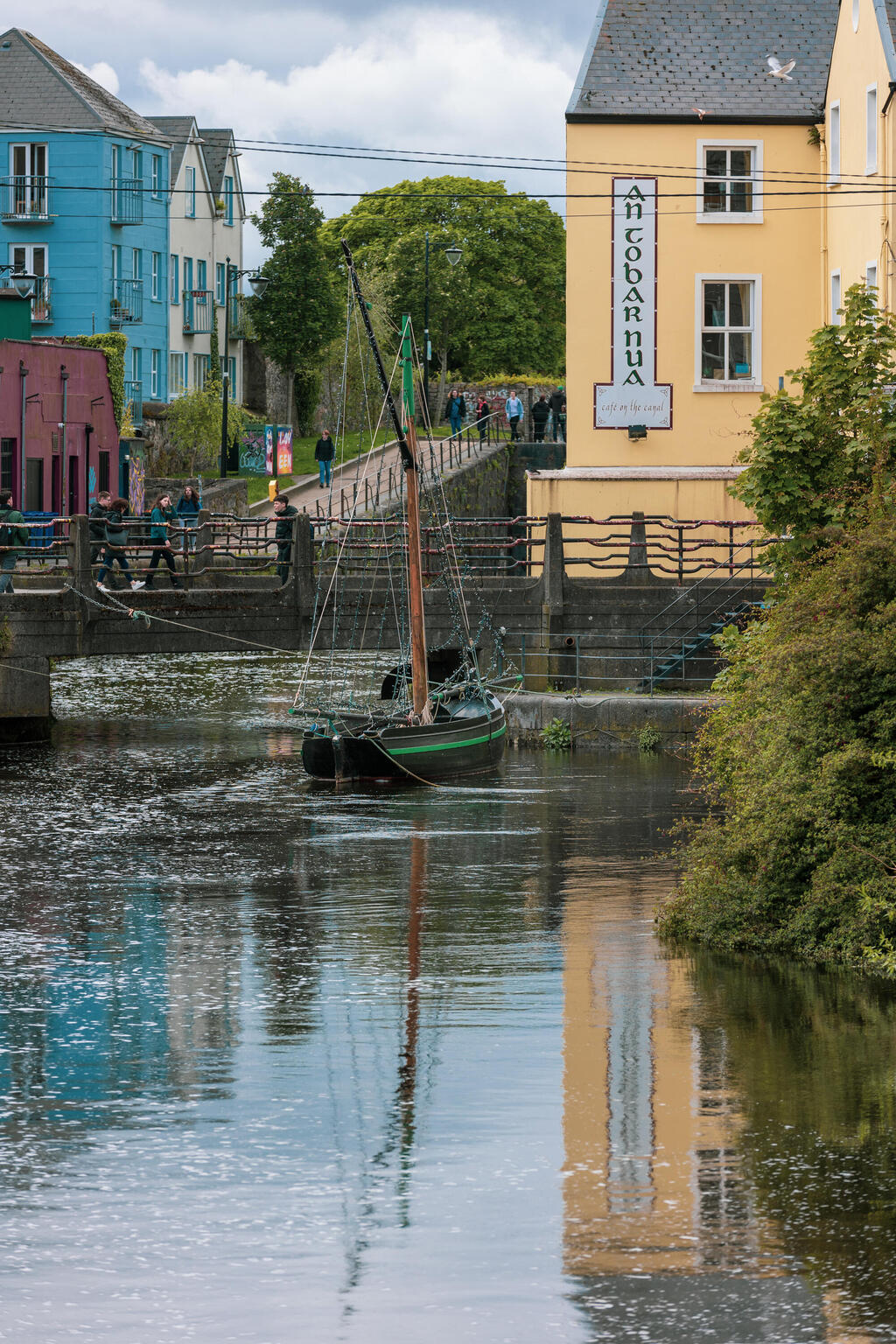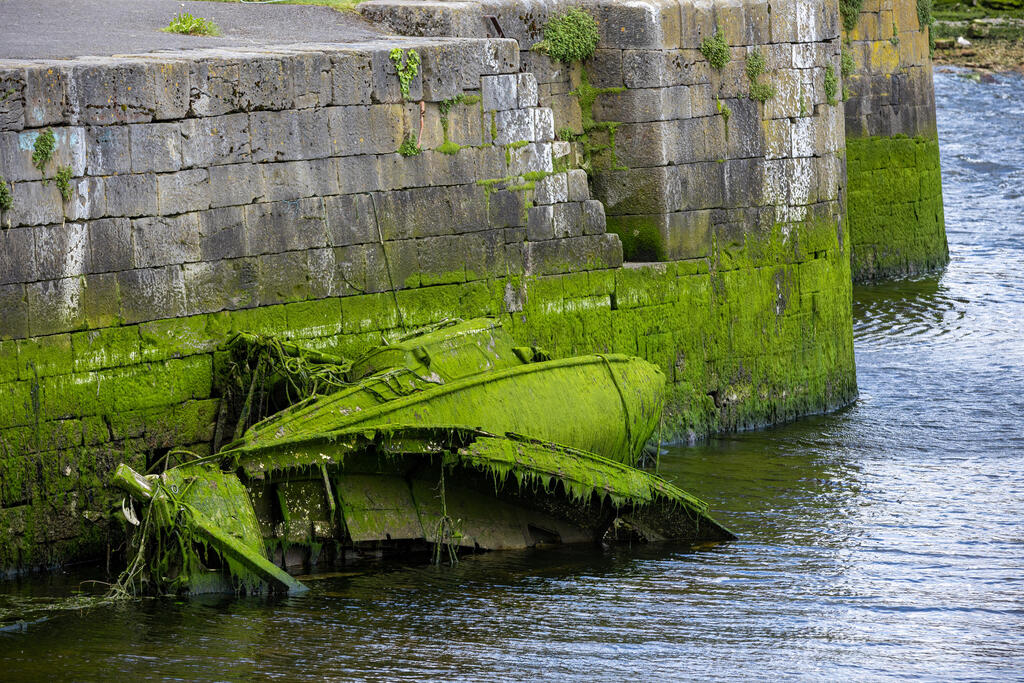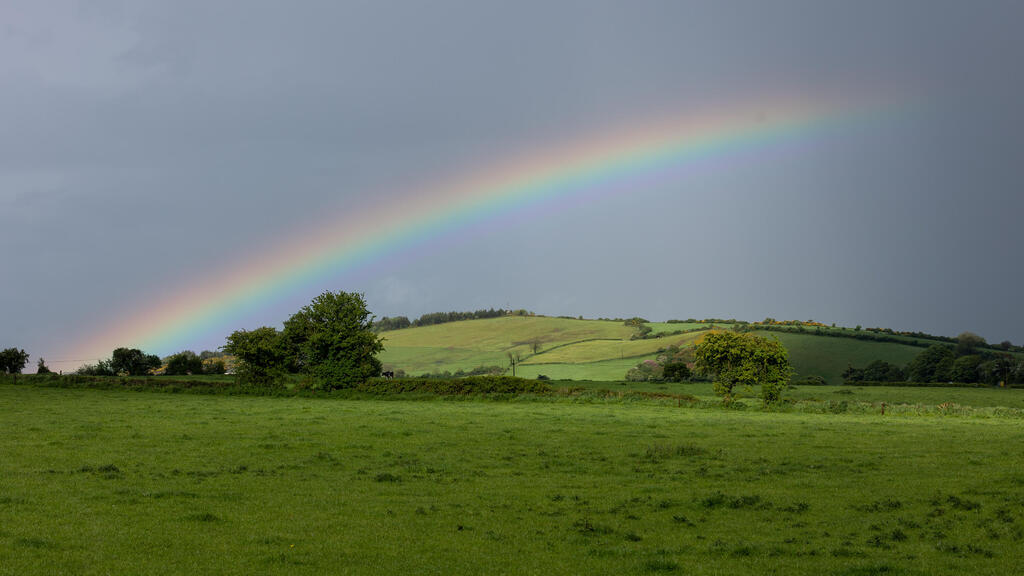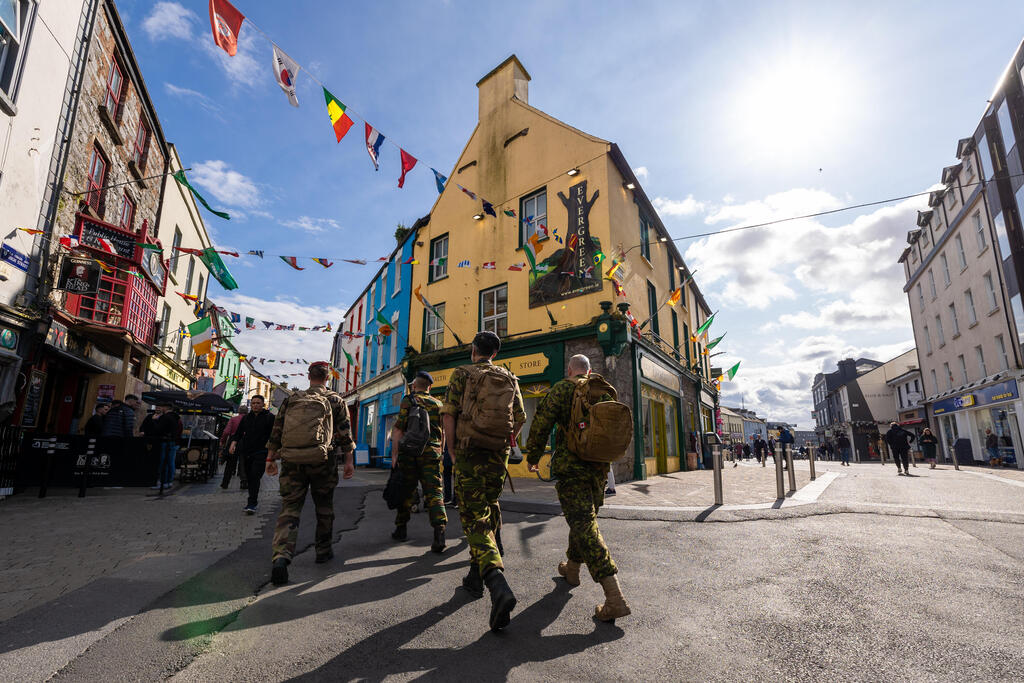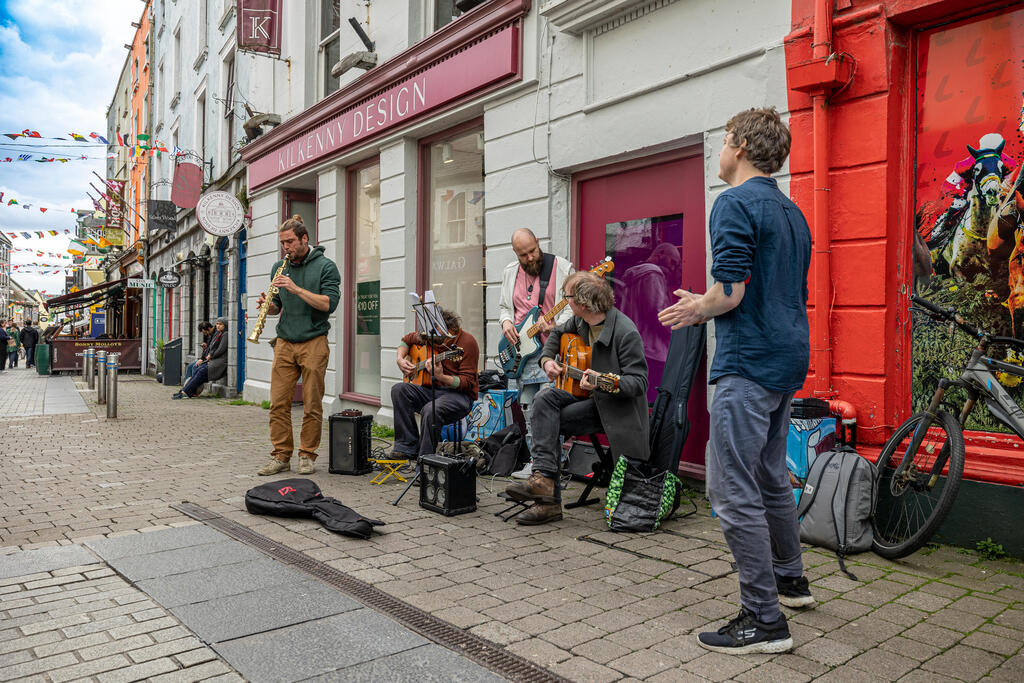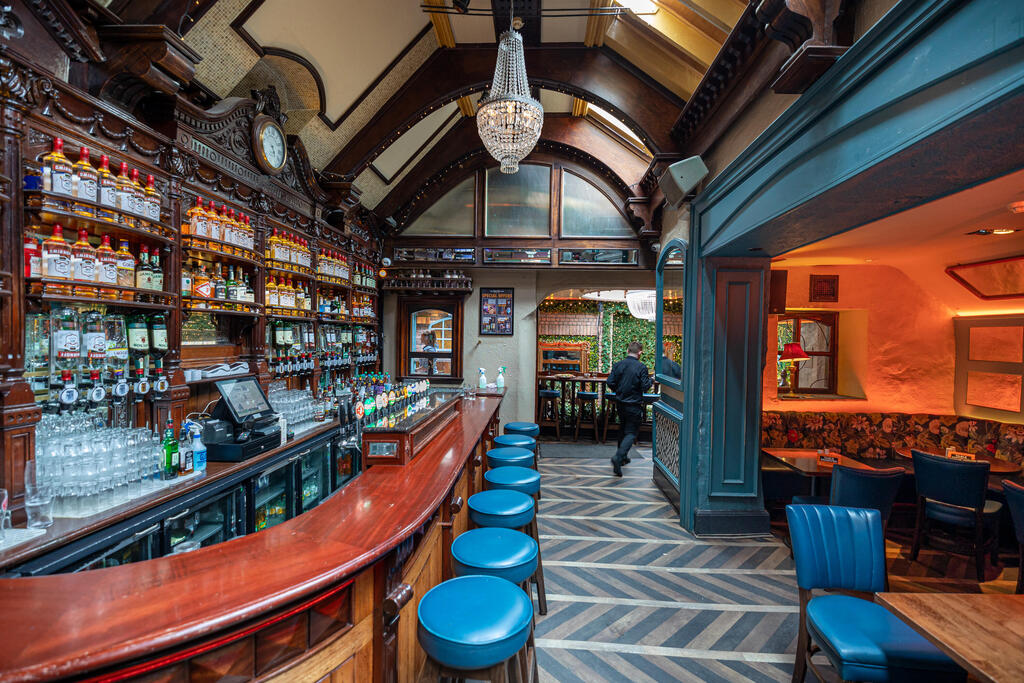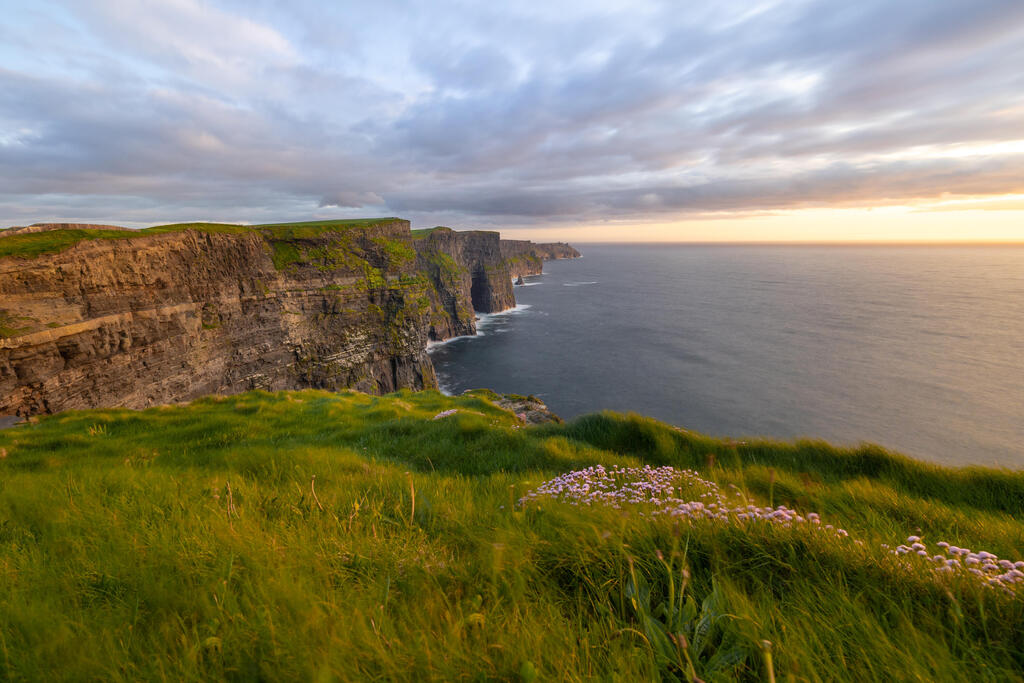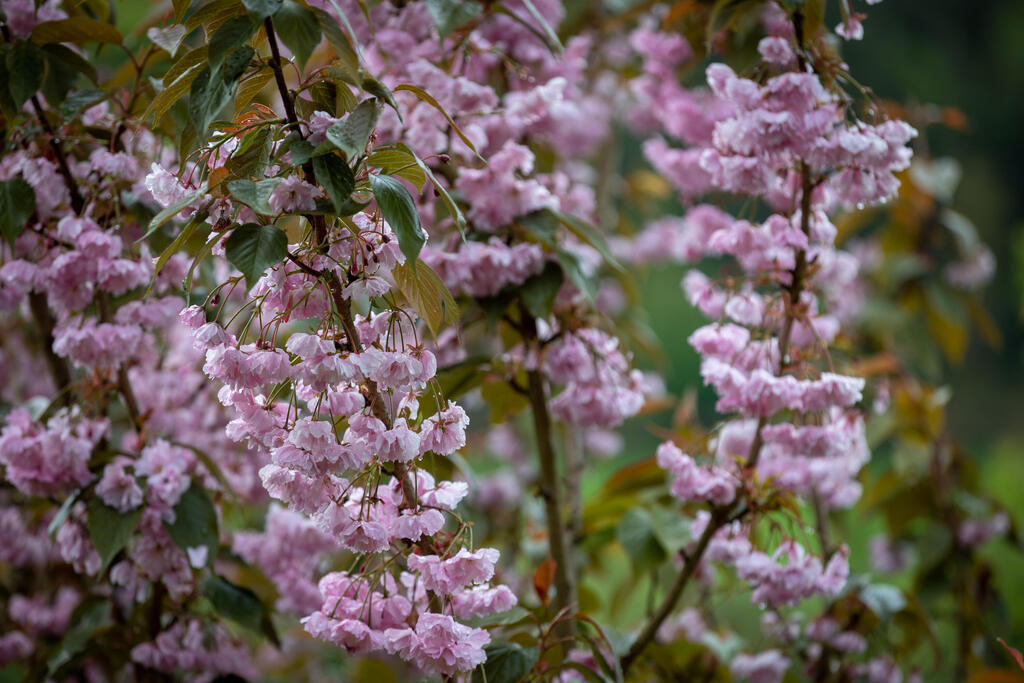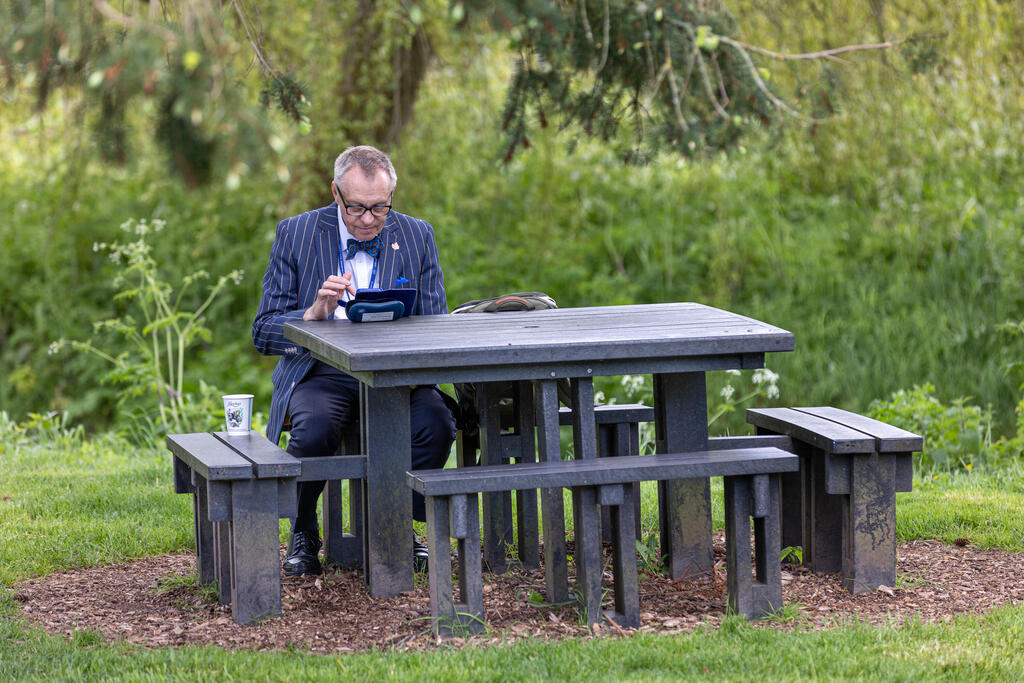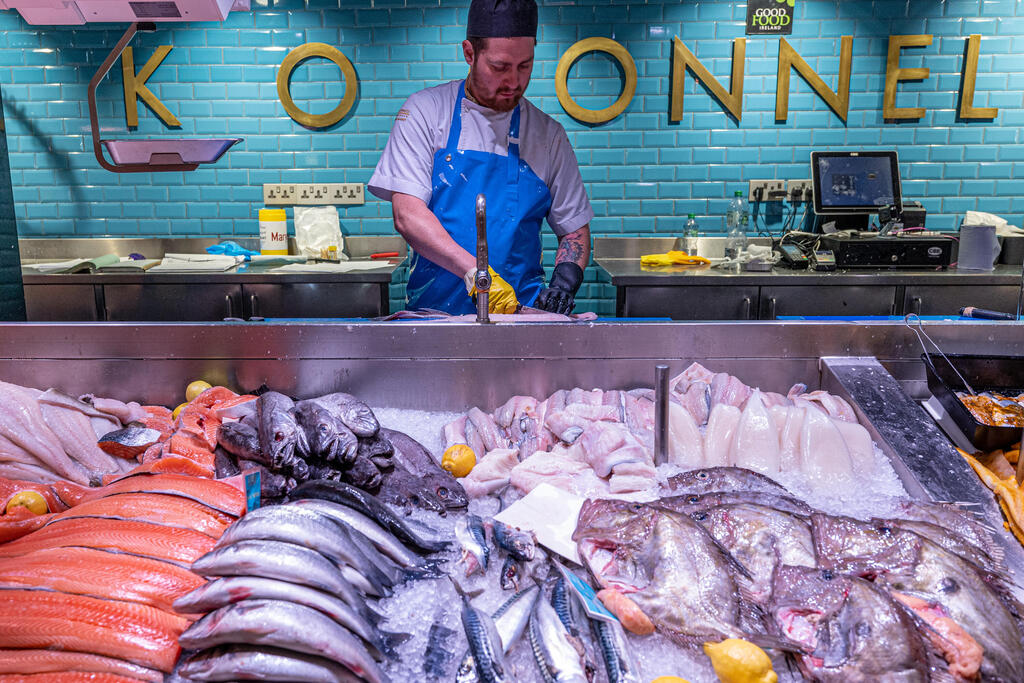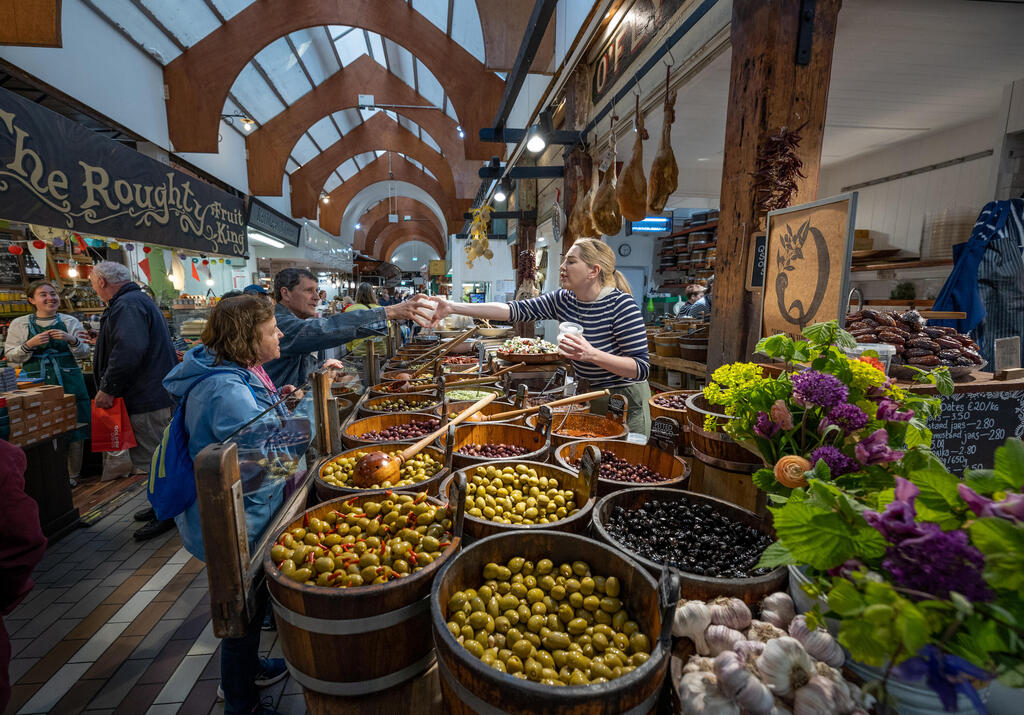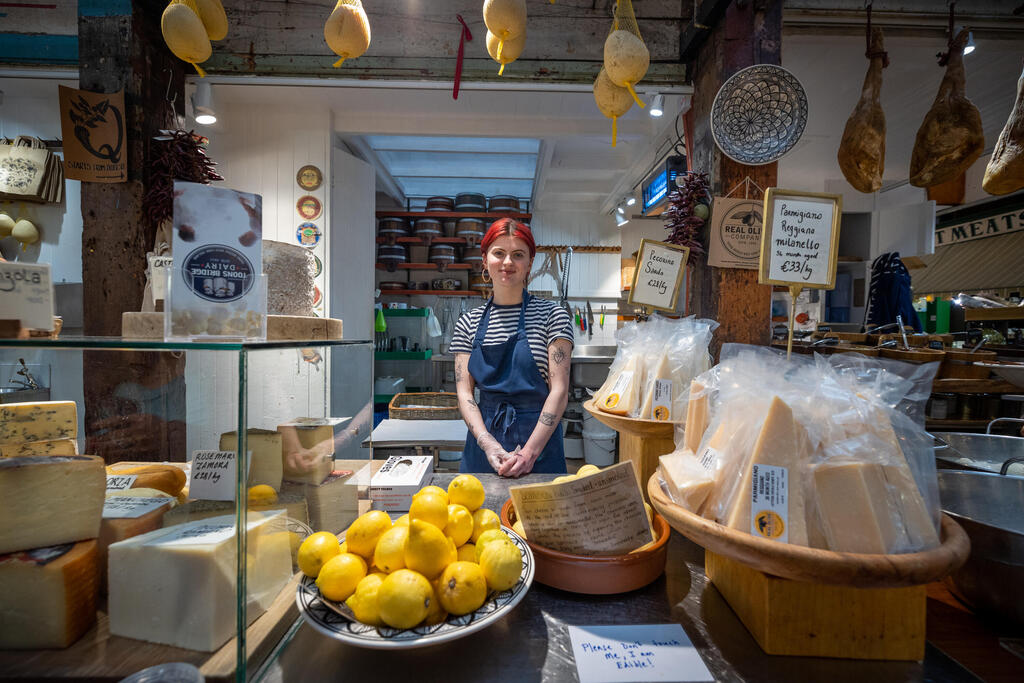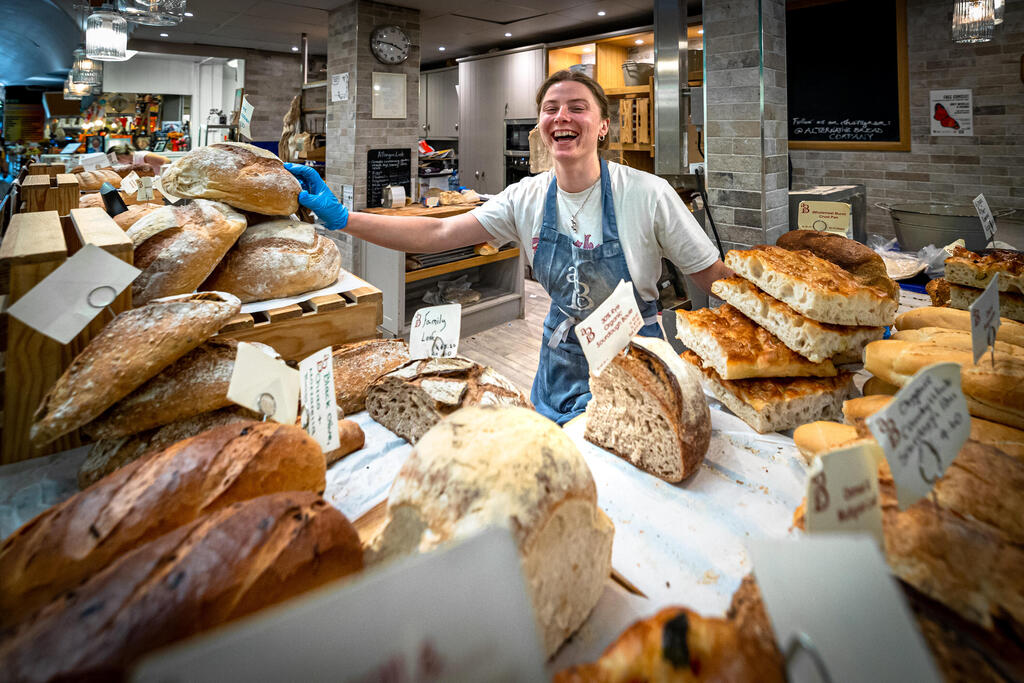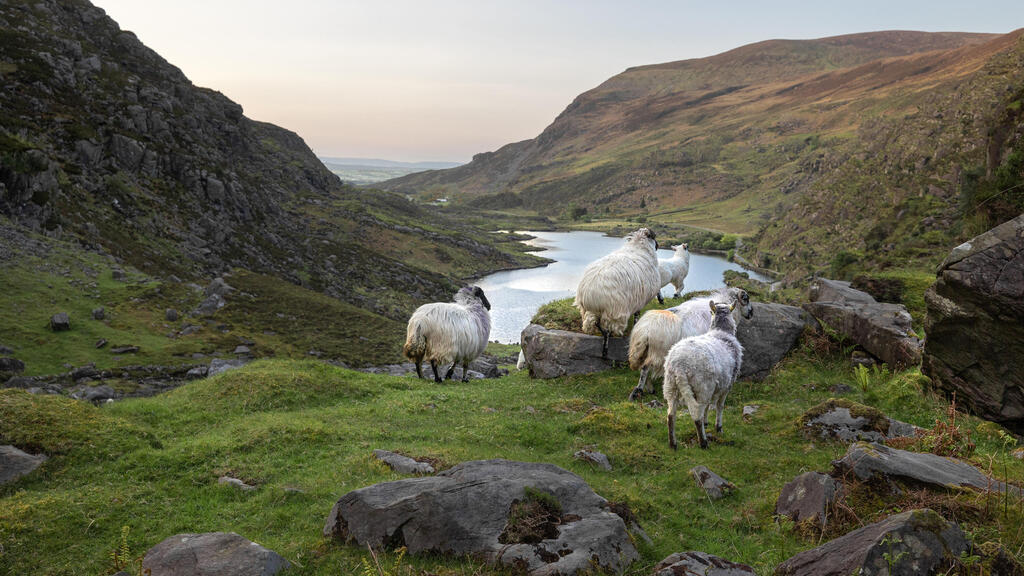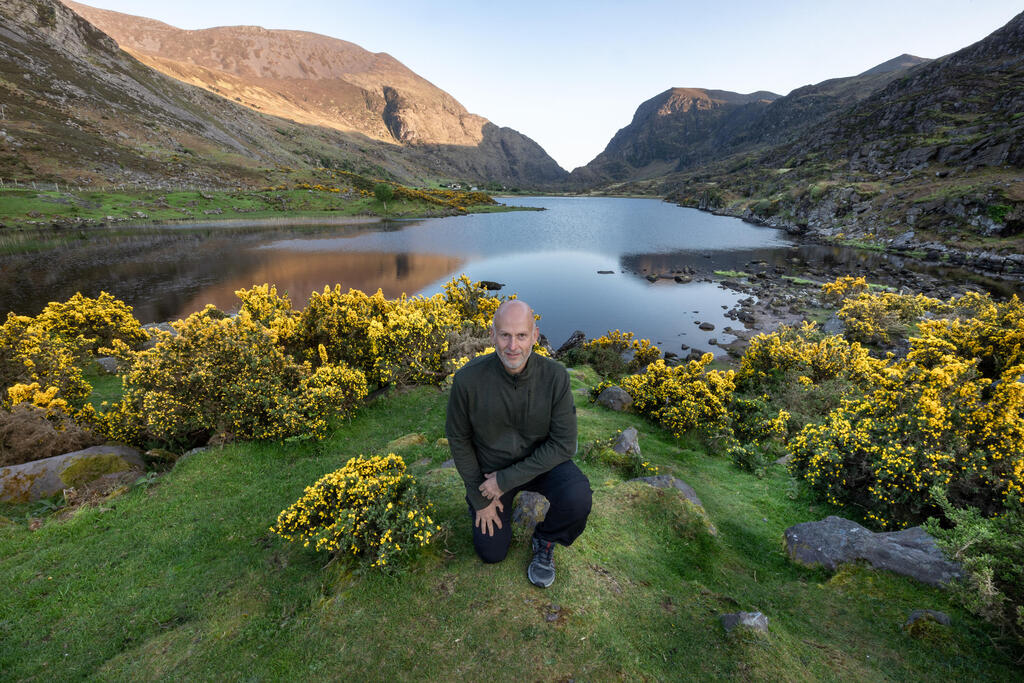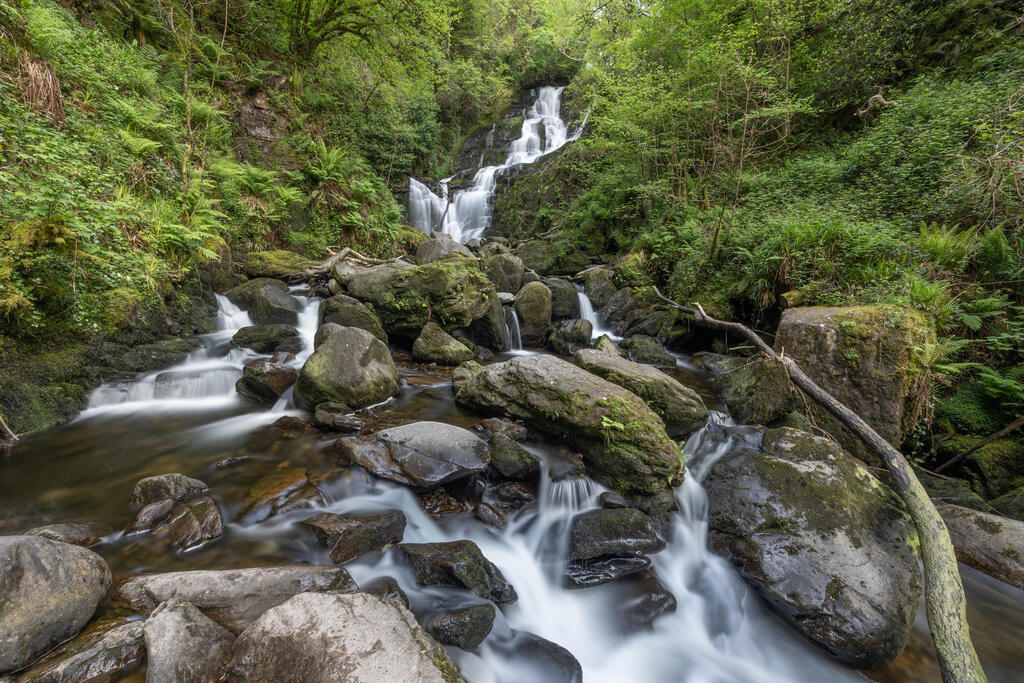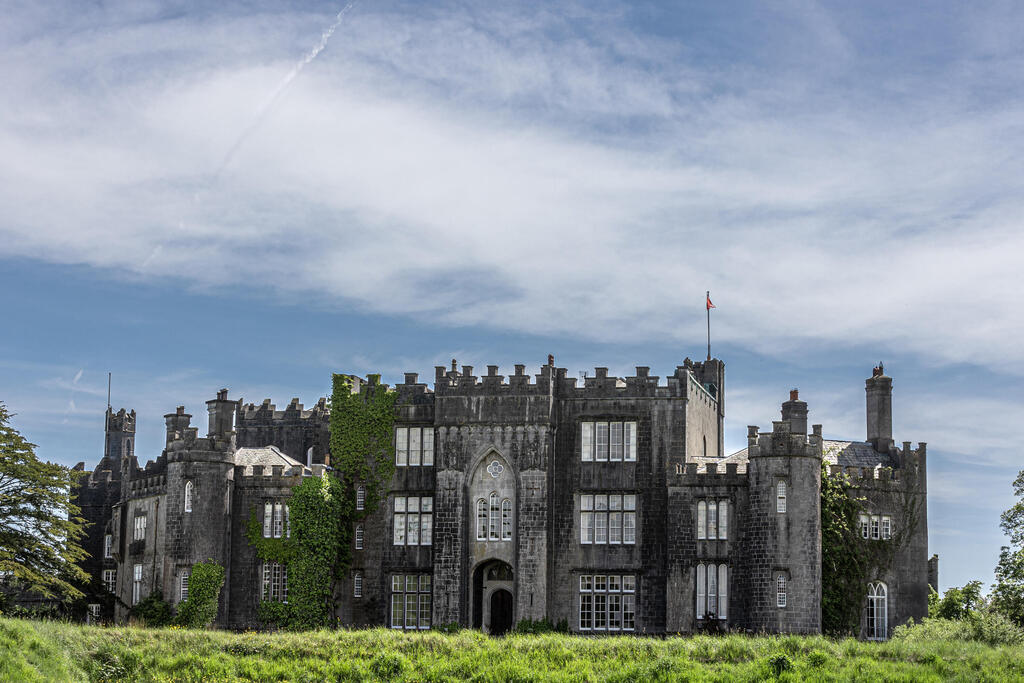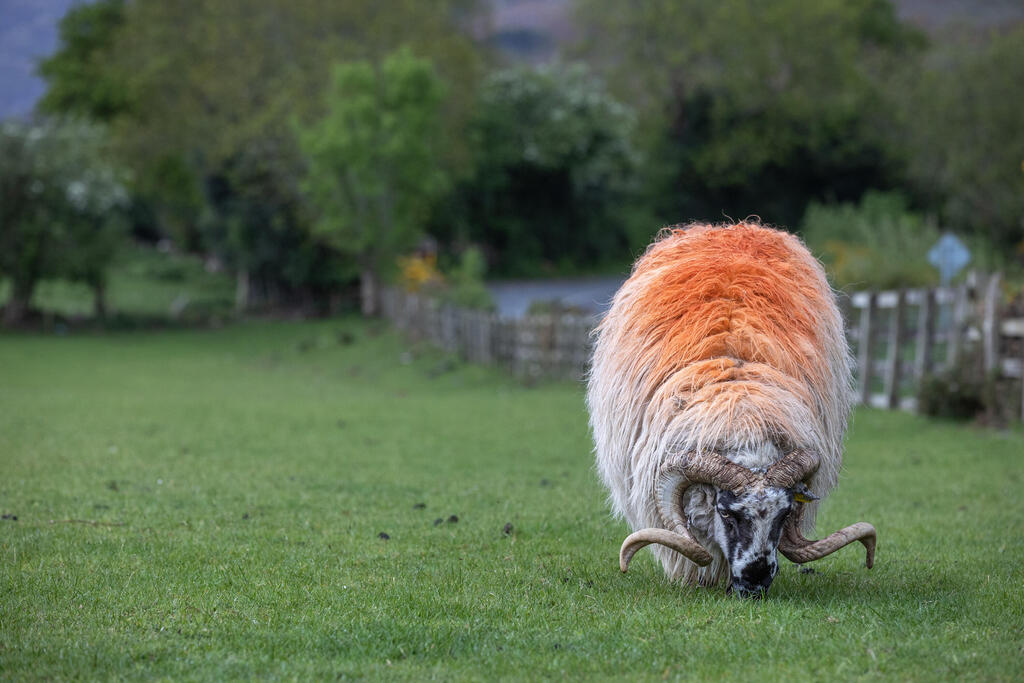Getting your Trinity Audio player ready...
Naturally, when you approach the car you've rented at Dublin Airport, you try to enter through the wrong door. Additional quirks include signaling when you want to turn on the windshield wipers, and vice versa. Jokes aside, the real danger lies in entering roundabouts (you need to turn left) and driving on the narrow countryside roads, all while dodging the roadside blackberry bushes. In short, driving requires focus, but it's definitely worth the effort.
Read more:
The direct flight to Dublin lands at 8pm, so the smart choice was to spend the night right next to the airport. In the morning, we'd go back to pick up the rental car and hit the road feeling refreshed and in good spirits.
Ireland is roughly three times the size of Israel but has about half the population and four million sheep. A simple calculation tells you it's six times less crowded than where we're from. I don't mention these statistics randomly. The more I travel, the more I realize how much we Israelis subconsciously crave open spaces, clean air, flowing water and the ability to drive for miles without seeing concrete, power lines or traffic jams. As soon as you hit the road, your soul automatically relaxes, your blood pressure drops and you want to keep savoring this goodness.
Our main destination was the town of Killarney, which is about 300 km southwest of Dublin, the capital. It would serve as our hub for day trips in the coming days.
We pulled off the highway at the first opportunity and found ourselves driving on nearly empty roads that meandered through rolling fields and hills covered with yellow bushes, dotted with many of those four million sheep, each marked with a similar colored spot on their backs.
Keeping with the times, we asked Chat GPT to recommend attractions along the way, and the artificial intelligence directed us to our first destination, Glendalough Valley, located in the Wicklow Mountains National Park.
A trail alongside the ruins of a 1,500-year-old settlement, once inhabited only by monks, led us to two stunning lakes surrounded by natural foliage and photogenic waterfalls. A light, unobtrusive drizzle reminded us that we were in Ireland and helped explain how everything around us was so green and fresh.
The skies darkened as we continued westward, adding a dramatic flair to our next destination - the Rock of Cashel, a historic site in County Tipperary that features a church, a cathedral and several towers reaching skyward. The bonus was driving through endless fields of bright yellow rapeseed that looked fantastic in photos.
As sunset approached, we arrived in Killarney and managed to go on our first tour along the shores of Lough Leane. We even encountered some adorable red deer that live in the natural foliage surrounding the lake and are unfazed by the presence of humans.
As a northern country, the days are especially long in Ireland at this time of year—the sun rises just after five in the morning and sets after ten at night. A real bonus that we'll be taking advantage of in the coming days.
The next day, after a walk through Killarney with its colorful homes and small souvenir shops, we got in the car and set out without a specific destination in mind. We drove along the road that circles Lough Leane, heading toward the Wishing Bridge at the Gap of Dunloe, a narrow and picturesque mountain pass that cuts through County Kerry.
It's hard to believe that the narrow road is two-way, but as if by magic, when a car comes from the opposite direction, patience, courtesy, and some motor acrobatics allow both cars to pass safely. Plump sheep with curled horns grazed leisurely along the way, barely lifting their gaze at the impressed tourists.
In the last light, we reached Ross Castle, a 15th-century fortress on the edge of the lake, to capture some final photos of the impressive structure and the cluster of boats at its foot.
The next day, we embarked on a full clockwise loop of the Ring of Kerry via Killarney National Park, Ireland's first national park. Along the winding road beside Muckross Lake, we stopped at several viewpoints to take in the changing scenery until we reached the most impressive of them all—Ladies View, named during Queen Victoria's visit to Ireland in 1861. The vista to the north showcased beautiful layers of mountains, small lakes and enchanting woodland.
We continued to circle the southwest corner of Ireland through colorful villages and small towns, with the vast and powerful Atlantic Ocean revealing itself in all its glory, dotted with countless islands. As darkness fell, we completed the long drive back to Killarney.
After focusing on relatively remote areas in the previous days, we decided to head north to a more touristy area: Galway, Ireland's third-largest city, and the famous Cliffs of Moher.
Driving smoothly on the N67 road, suddenly, approaching a roundabout, the navigation app announces, "Prepare to board a ferry." Not something you hear every day. A short 15-minute ferry ride takes us to the other shore and onto the road leading to the big city.
Galway, an ancient university town, turned out to be a true gem. We started in Claddagh, the oldest fishing village in Ireland, for a walk along the pleasant promenade overlooking colorful houses and boats of various sizes and shapes.
From there, we continued on foot to the bustling Latin Quarter, built from cobblestone streets in the historic center of Galway, on the left bank of the Corrib River. The quarter is rich with pubs, bars, restaurants and a variety of shops and galleries. A group of Irish buskers, exactly the kind you'd expect to encounter in a place like this, enlivened the atmosphere with uplifting tunes. A small, charming chocolate shop offering a variety of flavors left us craving for more. Satisfied and content, we set out back on the road heading south, to the highlight of the day—watching the sunset from the Cliffs of Moher.
The Cliffs of Moher, stretching for about eight kilometers, rise up to 214 meters above the Atlantic Ocean. The visitor center for the site is situated at the midpoint of the ridge, from which an accessible path leads to the cliffs themselves. A stunning and powerful landscape is revealed—where the setting sun paints the massive rocks in gold.
On our last free day, we decided to head east to Cork, the second-largest city in Ireland. Before entering the city, we stopped at the impressive Blarney Castle. It's said that the castle grounds house the stone that served as the pillow of Jacob the patriarch when he dreamed of the ladder to heaven, and that it was brought from the Holy Land during the Crusades. We couldn’t verify this claim, but we did enjoy walking through the well-maintained gardens on the hilltop, impressed by the bursting spring blooms.
We then headed into the city, going straight to the English Market, an 18th-century complex where various vendors offer local produce. It was both photogenic and delicious.
When we returned to Killarney, the sun hadn't yet set, so we took one last tour of the park. This included a short walk to the cascading Torc Waterfall and another loop around the Gap of Dunloe, this time going all the way to the Black Valley. It was just us and the occasional sheep sharing the winding road.
On the last day, we headed toward Dublin International Airport. We made a long stop along the way in the town of Birr, which is famous for its impressive 12th-century castle and its enormous telescope that was considered the largest in the world for many decades.
A leisurely walk through the vast gardens, among fountains, small bridges and dense groves, was the perfect conclusion to our enjoyable and photogenic trip through beautiful Ireland.
Rafi Korn is an experienced photography teacher who has led courses, lectures and workshops both in Israel and internationally. You are invited to visit his website and follow him on Facebook and Instagram.


